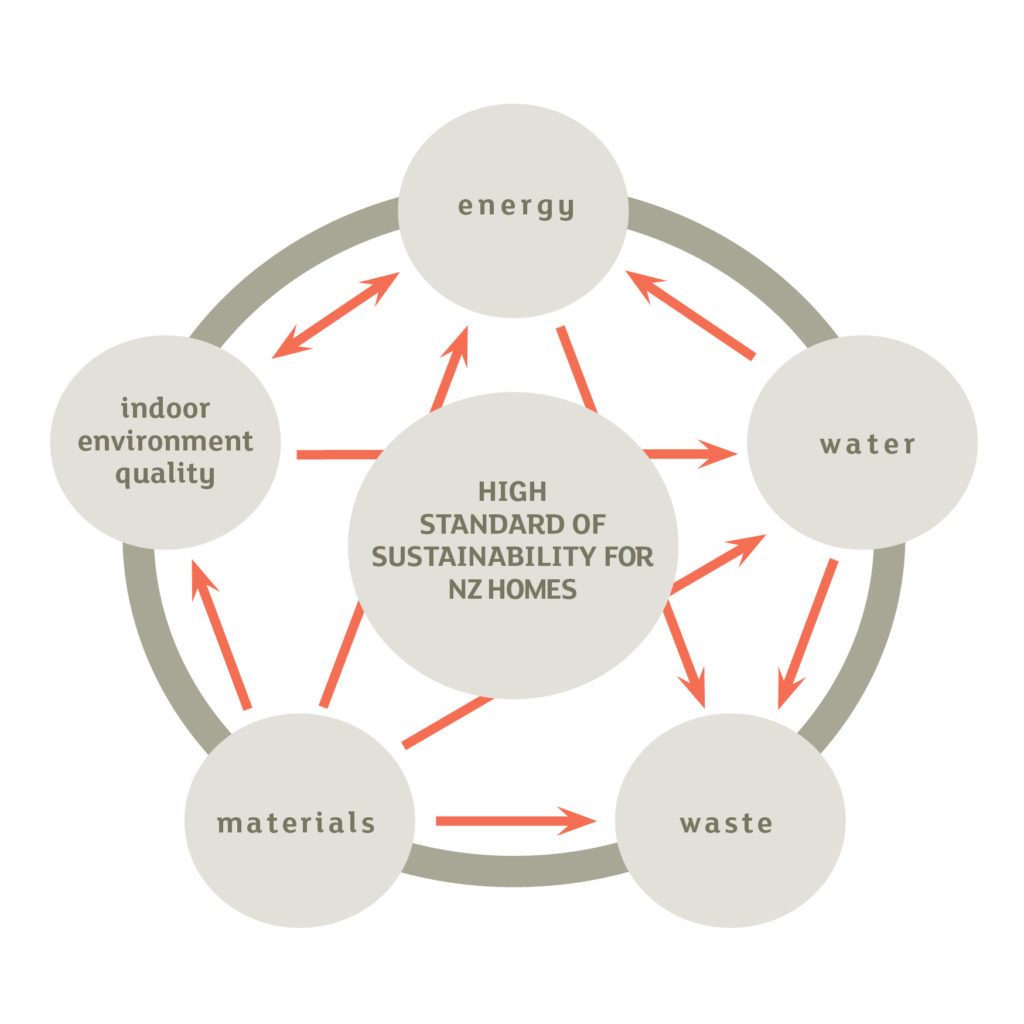
Whole of house performance
We believe that we need to focus on the whole of the house in order to really get a fundamental change in our homes. Why? Our houses are a web of interdependent features and building systems. We cannot fix one area only without compromises and under-performance in other aspects of the home. For example:
- We could use less energy by under-heating the home, but this would mean unhealthy temperatures.
- We could install heat pumps or pellet burners to heat a home, but without sealing draughts and insulating ceiling, walls and floor, this would be like driving a car with the heater on and the windows open.
- We could install a wonderful super-energy-efficient product, but if it has toxic by-products, we’d compromise our indoor environment.
- We could insulate and use energy efficient heating, appliances and lighting but if we still use a lot of hot water, overall energy use will still be high – approximately 30% of typical New Zealand household energy consumption is spent heating water.
- And even if a home’s energy use was as efficient as possible, but we used a huge amount of reticulated water, we would have to consider the energy used to collect, purify, and transport that water to our door.